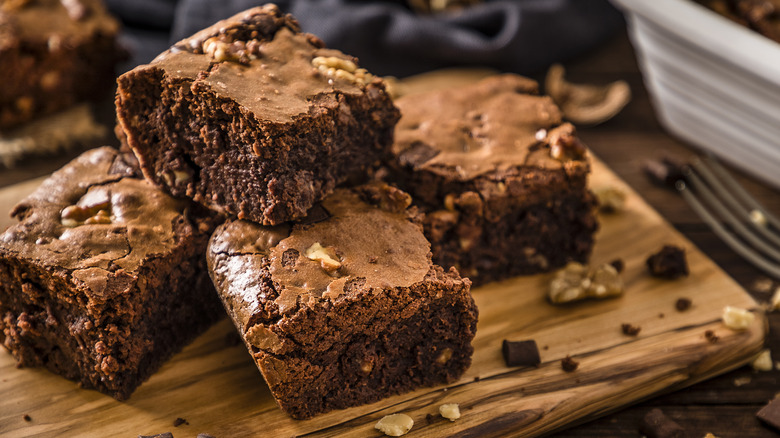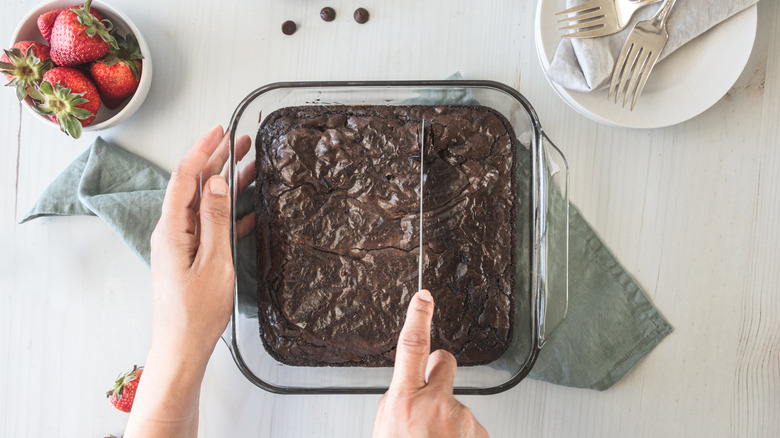A Plastic Knife Will Cut Clean Brownies Every Time
Brownies might be a delight to eat, but they aren't the easiest food to cut. When you make them extra-desirable, they are a little chewy-gooey, but perfectly gooey brownies can make quite a mess. Once they come out of the oven and you make that first slice, the sticky goodness clings to your knife, making every next cut a little messier. Eventually, you end up with crumbled, misshapen pieces instead of crisp squares, and that just isn't as impressive of a presentation. Luckily, there is a very simple way to get the clean cuts you're after and it's making sure you aren't using the wrong knife.
The next time you make brownies, forgo the traditional metal knife. Instead, choose a plastic knife. This method works because plastic is a naturally nonstick surface. In fact, the non-stick coating on your cookware is a special type of sprayed- and baked-on plastic. When you use a plastic knife, the nonstick surface keeps most of the sticky, gooey brownie from adhering and making a mess, allowing you to cut through your treat without accumulating a gummy buildup. For this approach to be the most effective, you must make smaller cuts and wipe down the knife with a warm, damp cloth (or paper towel) between cuts.
Get the most out of your plastic knife
As much as having a nonstick cutting implement helps you get the best brownie squares, there are a couple more key strategies you can employ to get the best results.
The first tip might be the hardest to adhere to. Don't cut the brownies right away. When brownies come out of the oven, they are at their gooiest. Naturally, that's when you want to sample what you've made, but you should wait at least 30 minutes to give them time to cool if you want the best cutting results.
The second tip is to stay away from serrated knives. If the goal is to have a nonstick, goo-free cutting experience, all those little ridges do is gum up the works. The best knife is clean and smooth. Also, when it comes to knife choice, the larger the knife (to a point, obviously) the better. The less sawing or dragging you need to do when cutting, the better your results.

